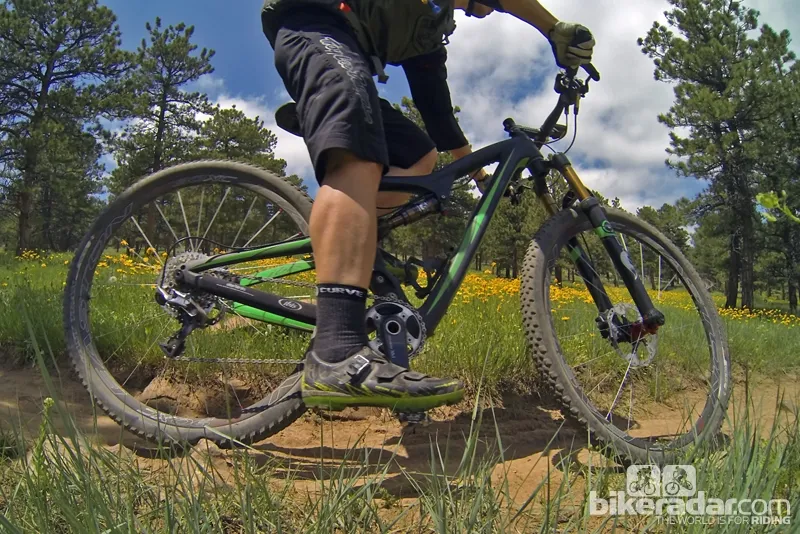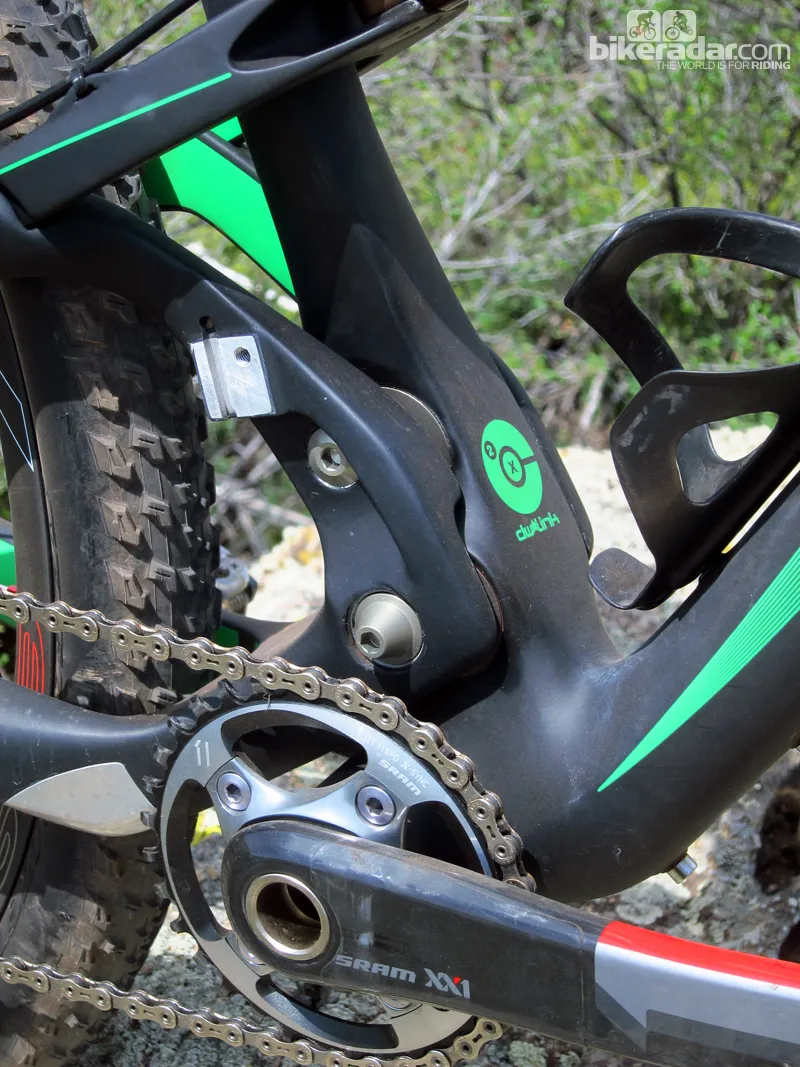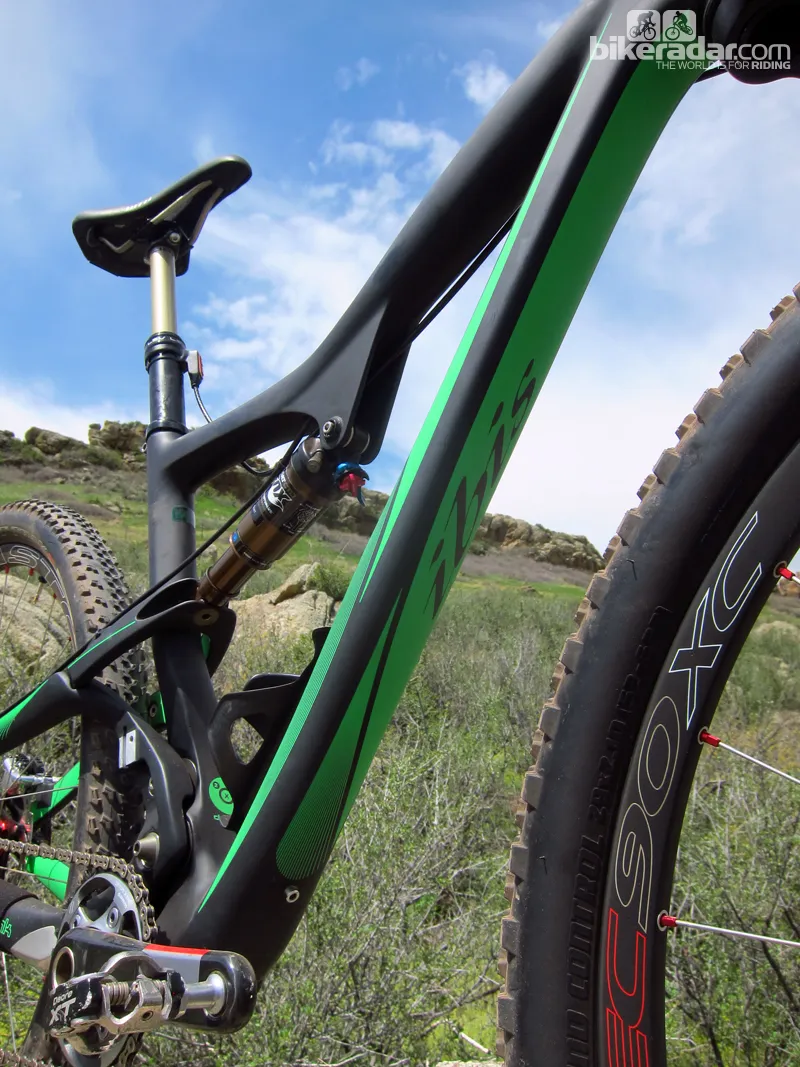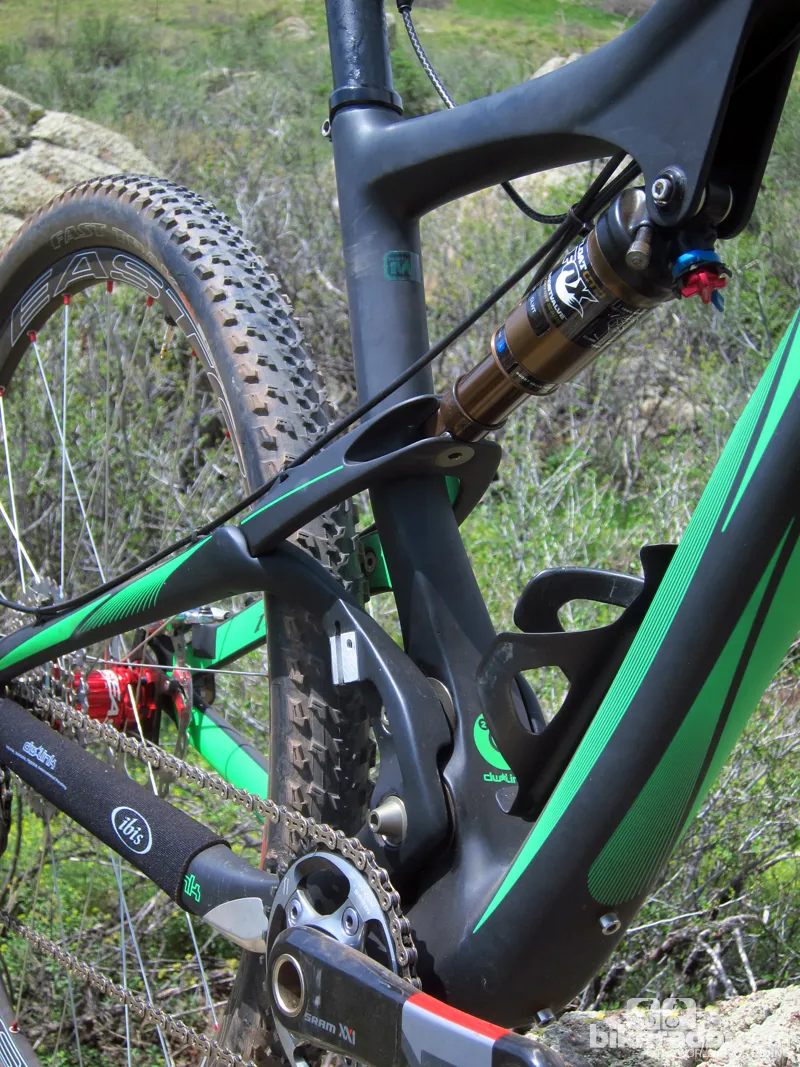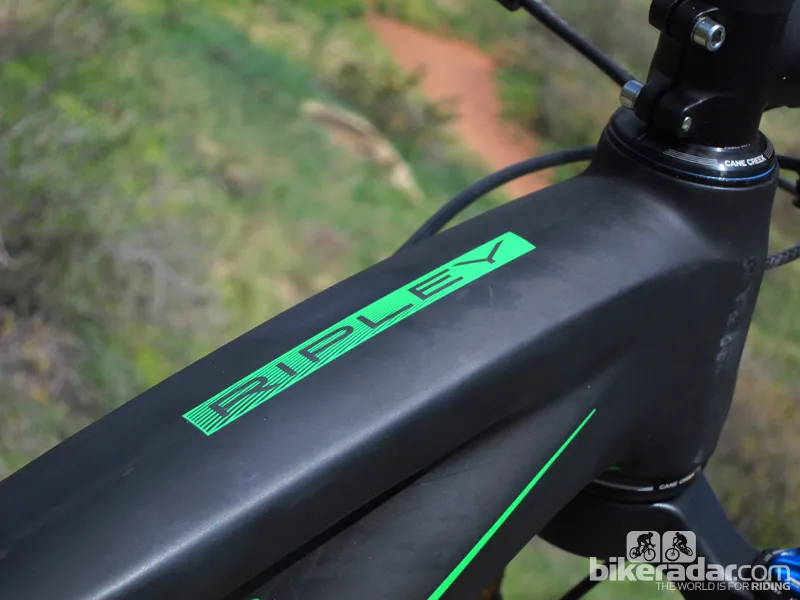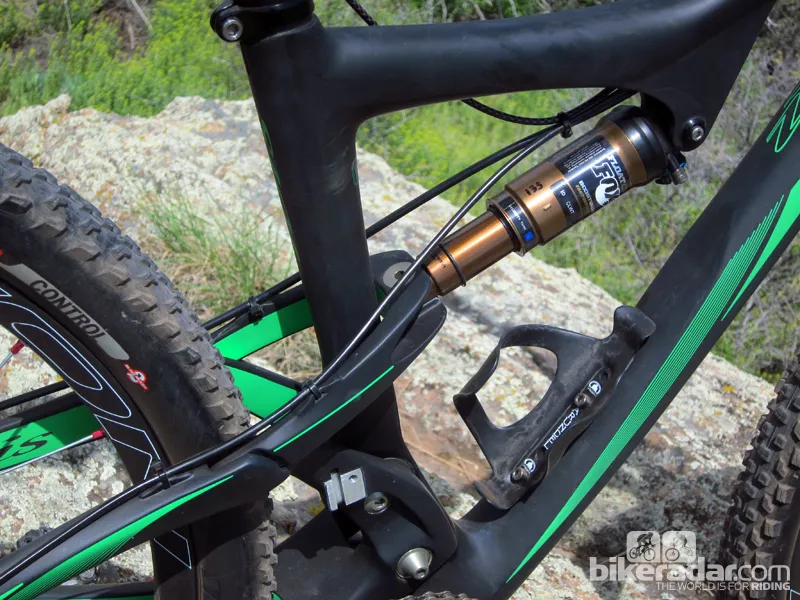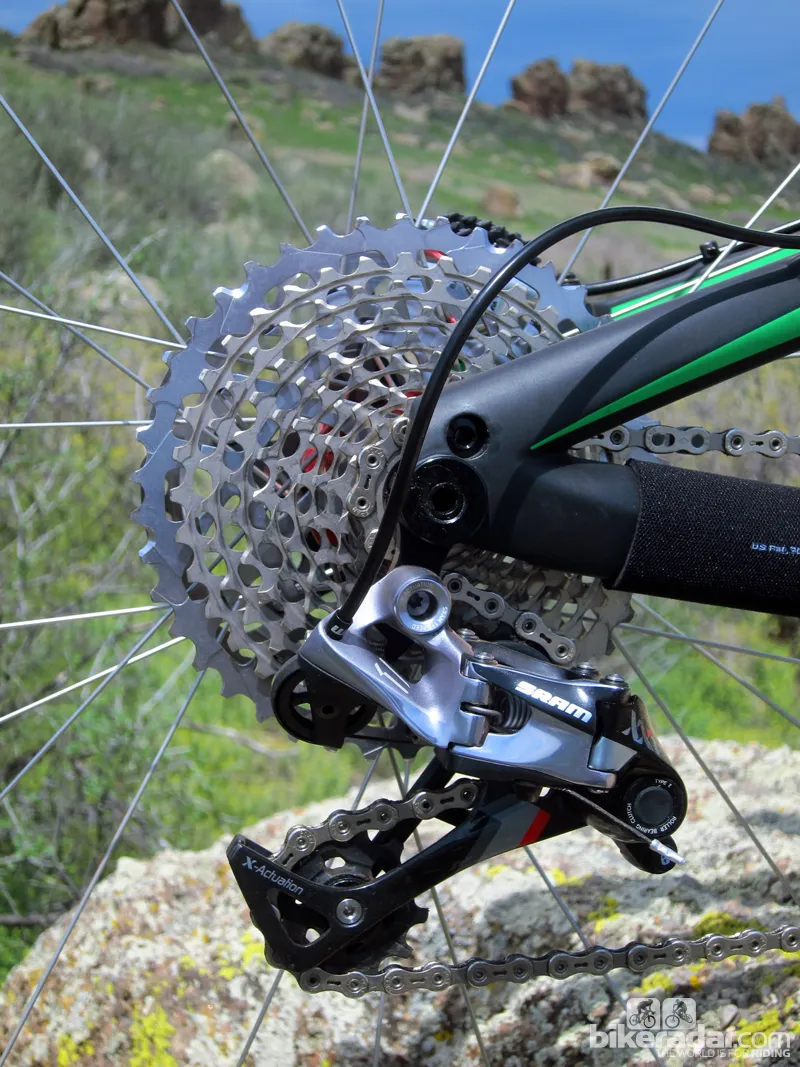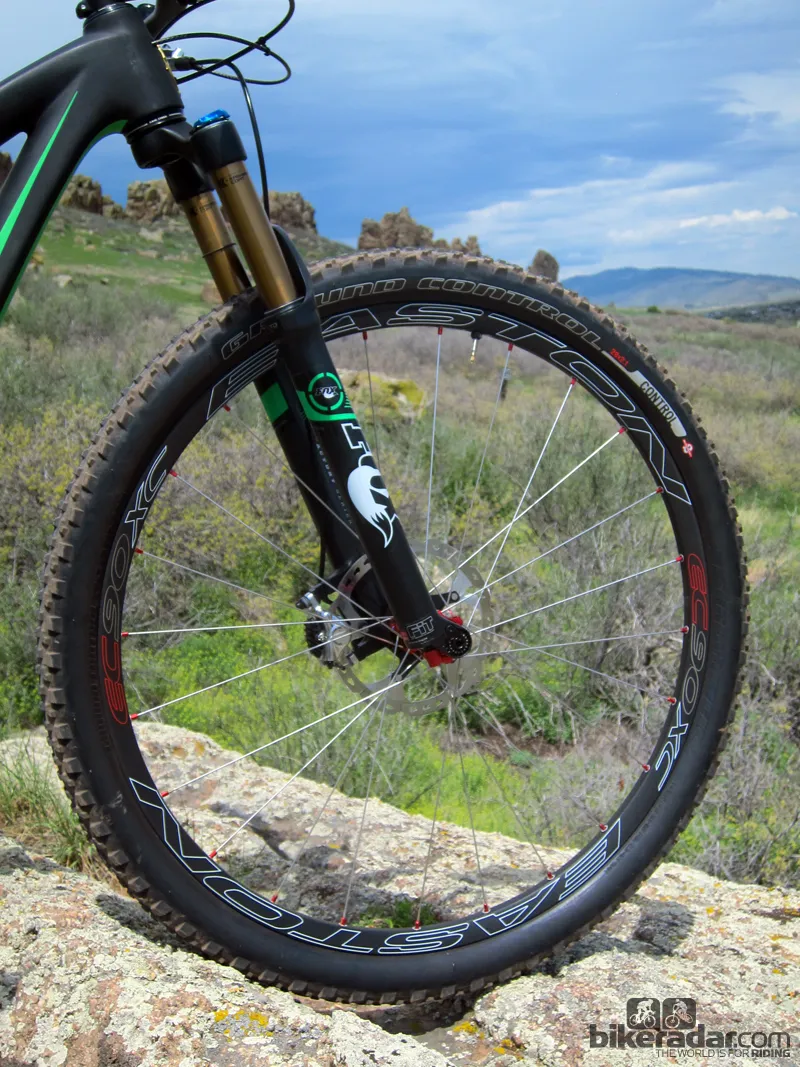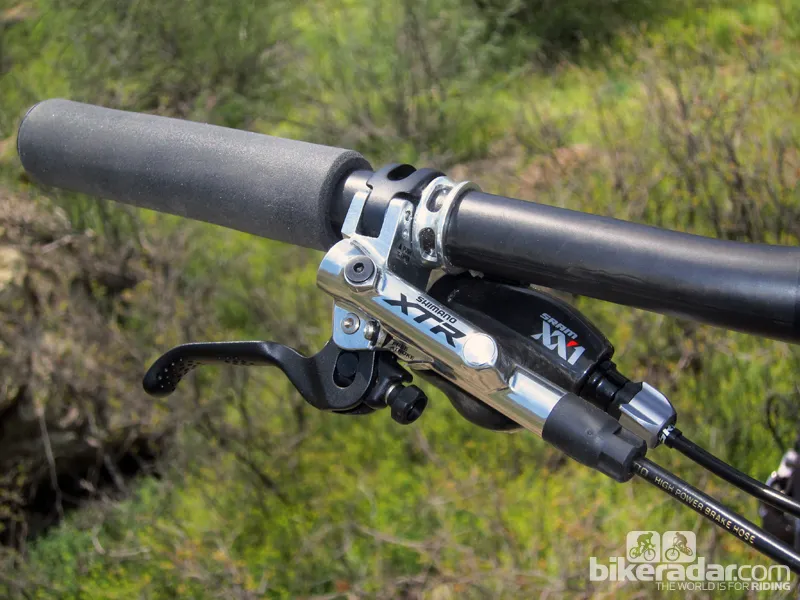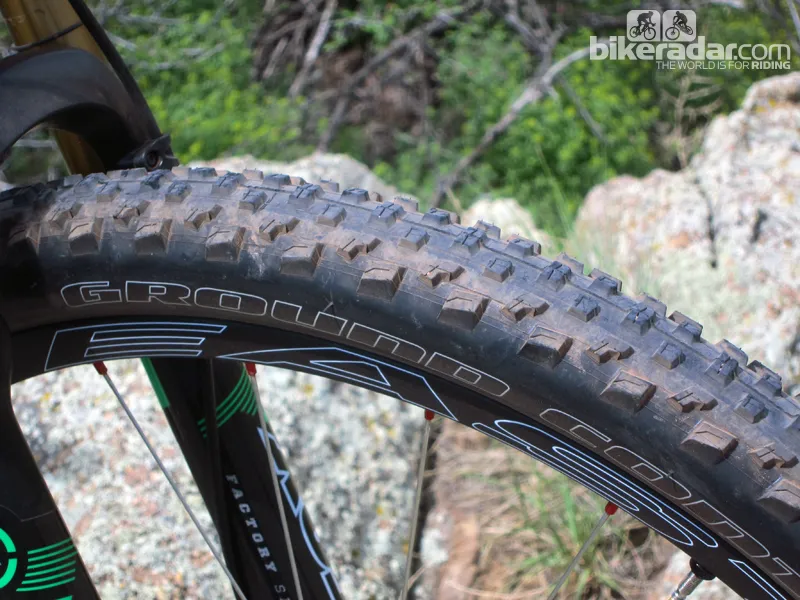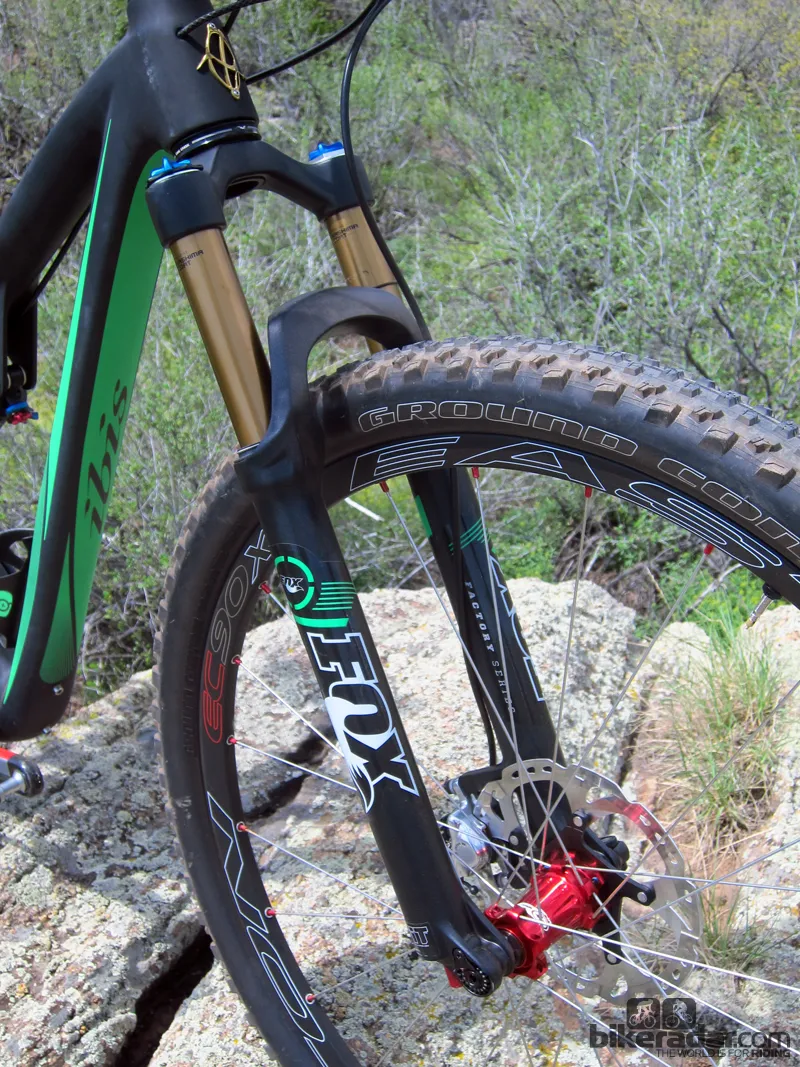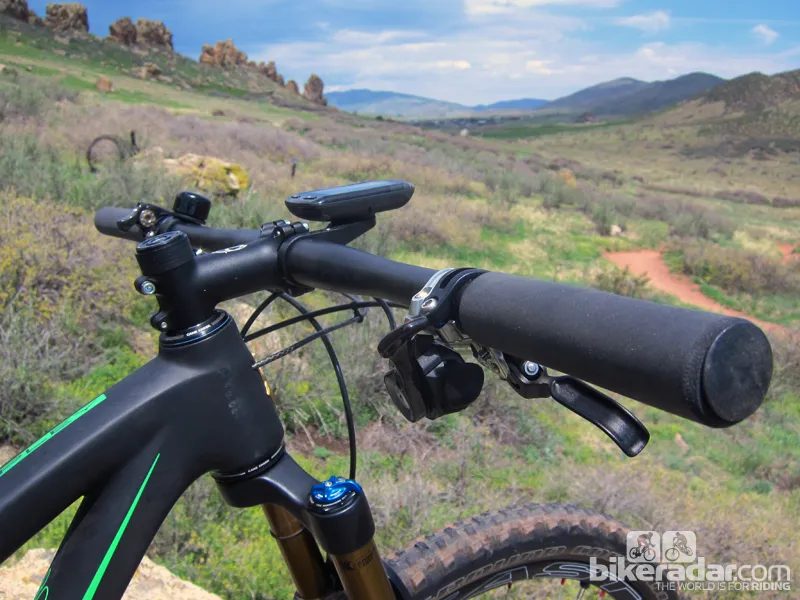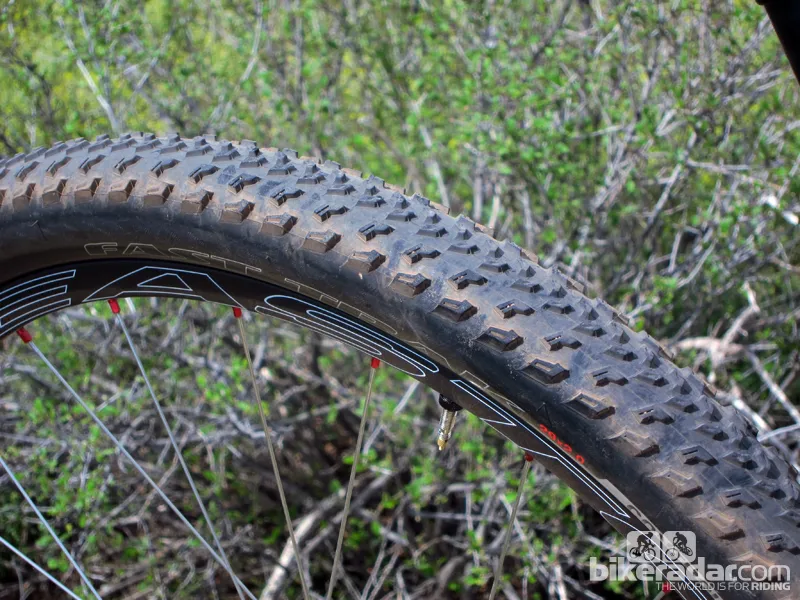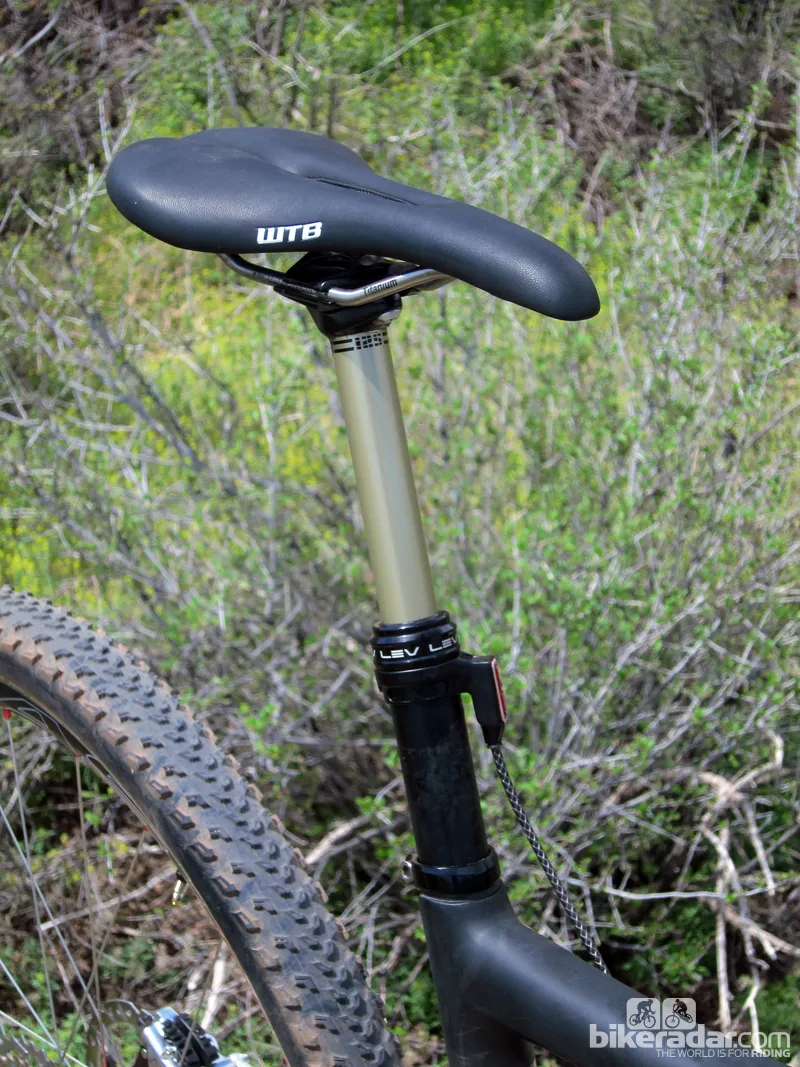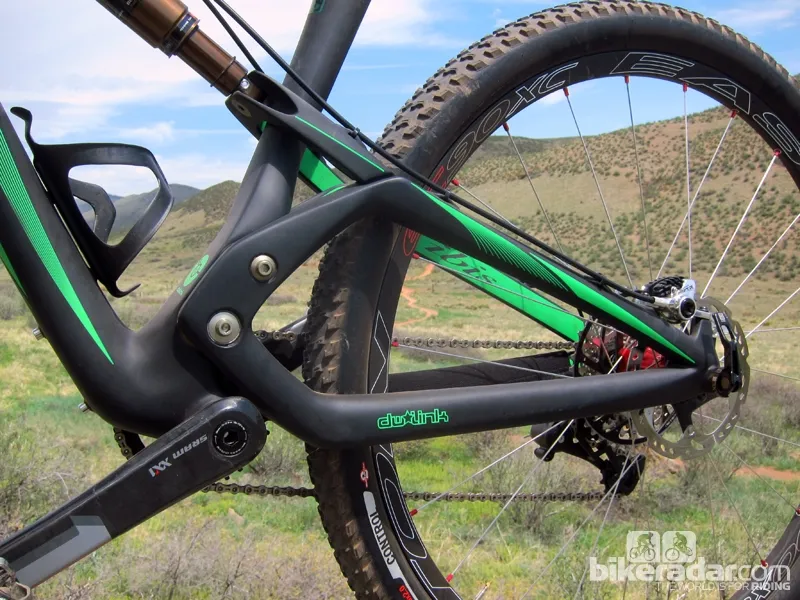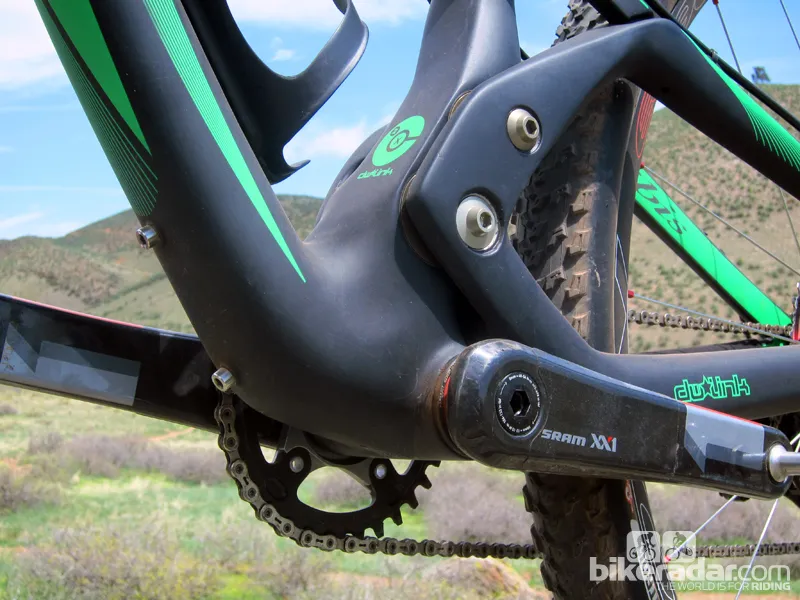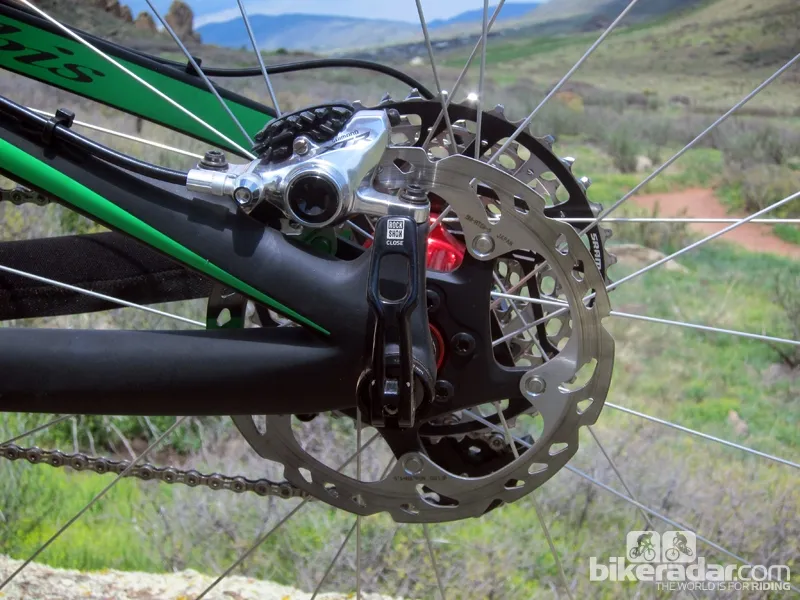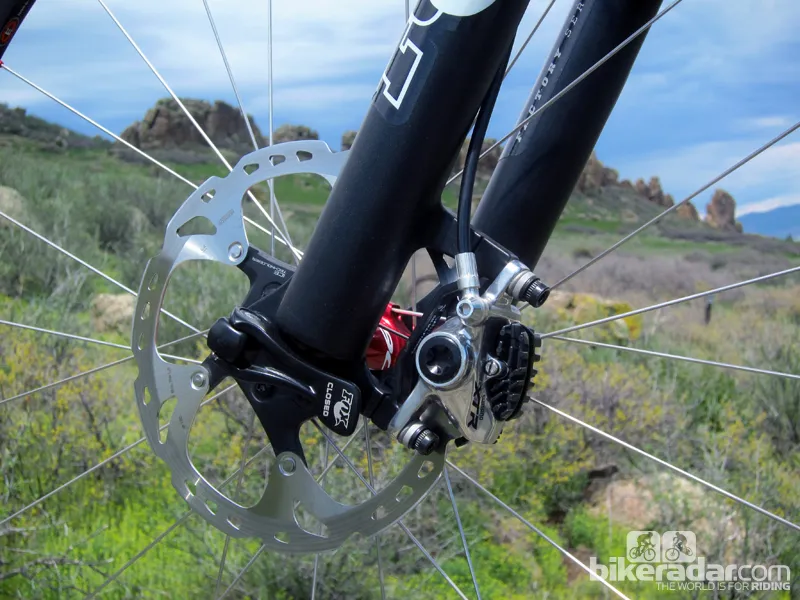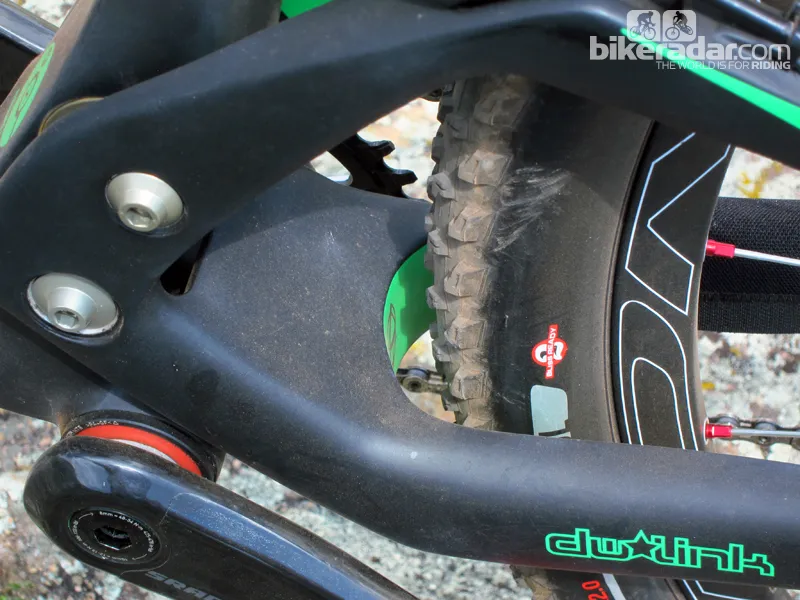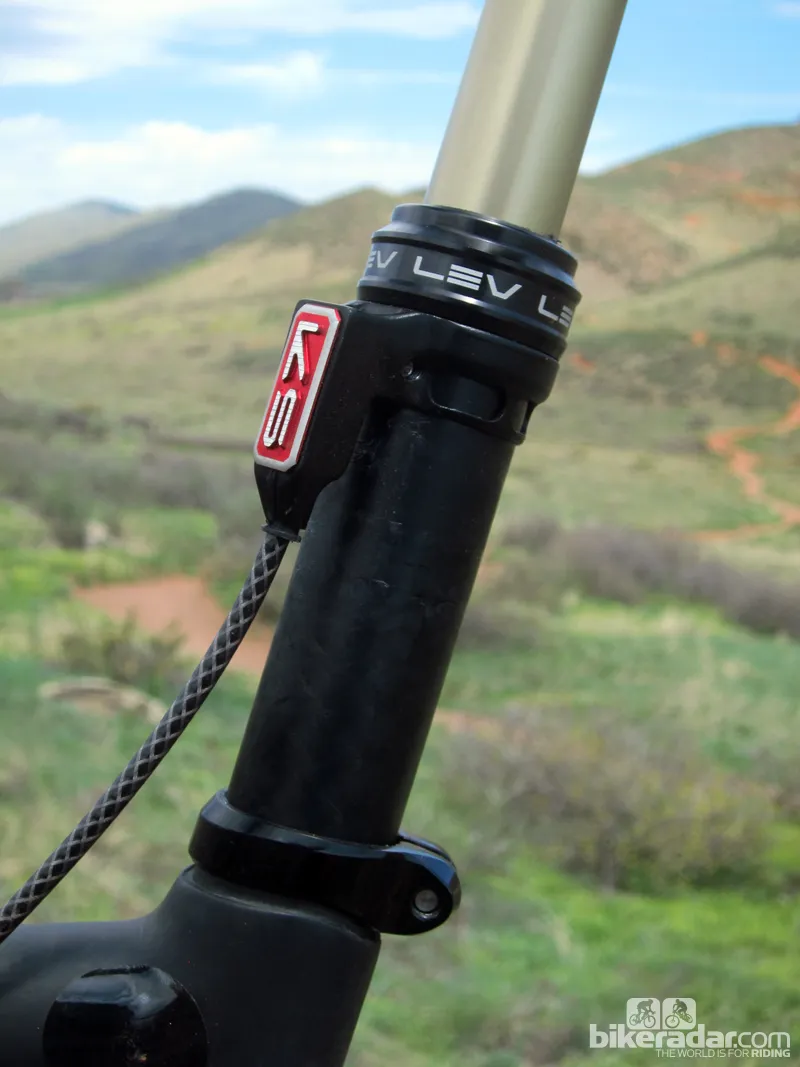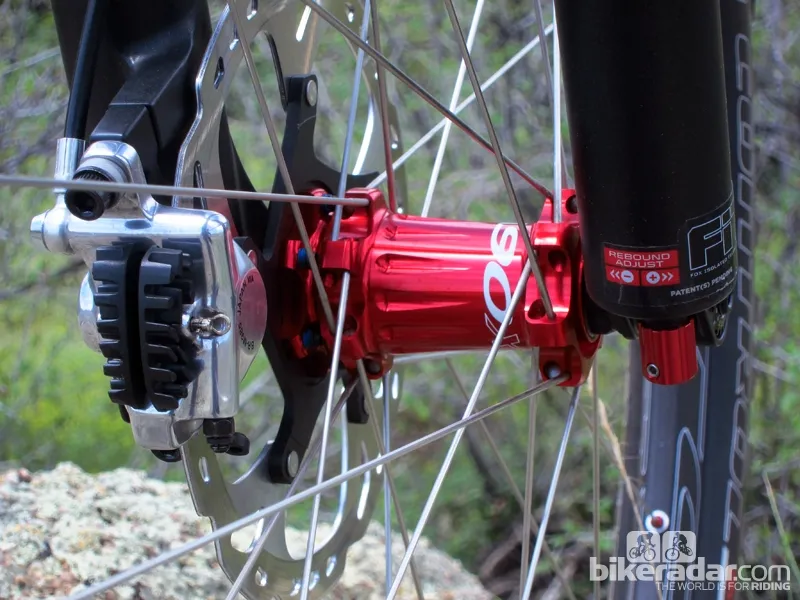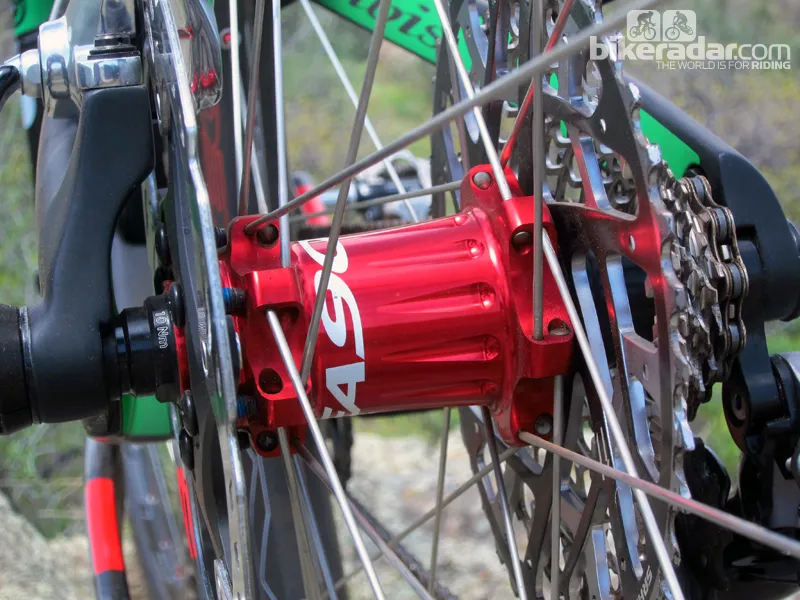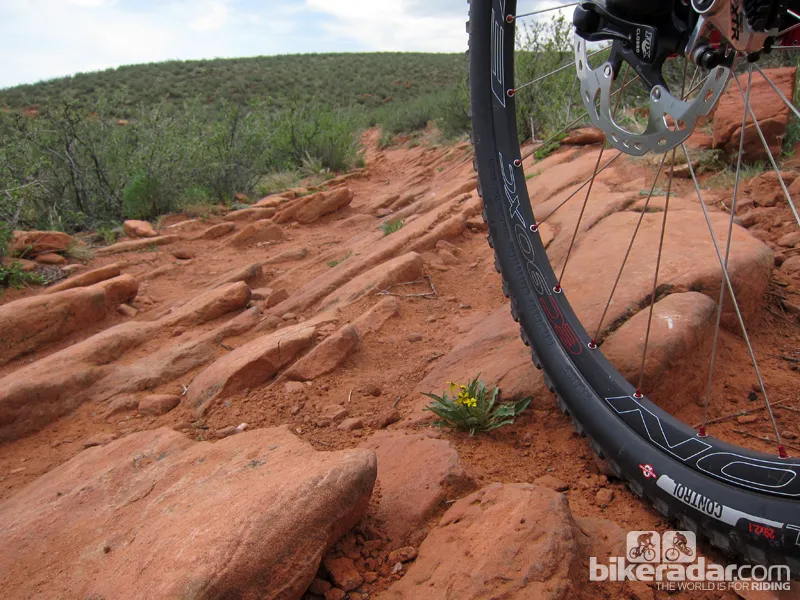Six years in the making, the long-rumored Ibis Ripley 29 trail bike was first put on display at the 2011 Eurobike show, but it would be almost two years before anyone could actually buy one.
Thankfully for Ibis, it's been well worth the wait, as the Ripley is flat-out awesome. Pedaling efficiency and weight are comparable to offerings from short-travel race bikes, the handling is entertainingly tossable, and the bike tracks the ground with impressive tenacity. Oh, and it looks great, too.
Ride & handling: Race bike efficiency with trail bike manners
Much of the Ripley's enviable performance can be traced back to its fantastic dw-link rear suspension system. With a healthy amount of anti-squat built into the linkage kinematics, pedaling efficiency is not only far better than what we'd normally expect from a trail bike but comparable to deliveries from the best short-travel full-suspension race bikes.
Seated climbing on perfectly smooth surfaces yields virtually zero unwanted shock movement, and intentionally jerky out-of-the-saddle efforts do almost nothing to upset the stability of the 120mm travel rear end.
After the first few rides where we were purposely fiddling with settings for the sake of experimentation, we never needed to switch the rear shock out of the fully open mode throughout three months of steady testing – even when clawing our way up steep, ledgy Colorado climbs.
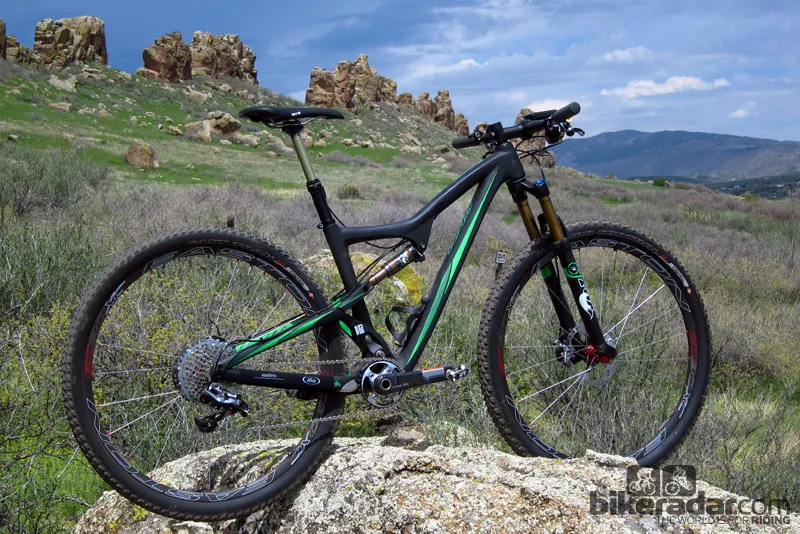
Ibis Ripley 29 trail bike
Even better, the rear end is fully free to track the ground unencumbered, as the pedaling efficiency is designed into the suspension itself instead of relying on heavy-handed compression valving.
The super-sensitive small bump performance levels more minor trail imperfections while remaining totally composed on bigger impacts without transferring undue harshness to the rider. Overall, the feel is unflappably planted but never dead.
The appropriate spring curve doesn't wallow in the middle of the stroke, either, and you can easily take advantage of the plentiful 'pop' out back. We quickly found ourselves pumping even minor dips in the trail and leaping out of bermed corners for extra speed – while Ibis doesn't endorse such behavior, the springiness of the rear end makes the Ripley a natural for clearing small doubles.
Adding to the Ripley's lively personality is its nimble handling. On paper, the 70-degree head tube angle and unusually short 1,100mm wheelbase – one degree steeper and nearly 50mm shorter than a comparably sized Specialized Stumpjumper FSR – would perhaps suggest an uncomfortably twitchy feel.
Not surprisingly, then, the Ripley is more than ready and willing to change direction. It's ridiculously flickable in fast, twisty singletrack – big wheels and all – and even tight uphill switchbacks are easy to navigate. Reasonably short, 445mm long chain stays make for relatively simple manuals, too.
Any expected high-speed instability is tempered by the extremely low, 325mm bottom bracket height – 13mm closer to the ground than the already-low Stumpy. You have to be very careful with pedal strikes as a result, but skilled riders will relish the awesome cornering tenacity that results from such a low center of gravity.
We did notice some front triangle flex under very hard cornering loads, although Ibis says we were supplied with an early preproduction sample.
"Your bike is from the second pilot run, and since then we've reinforced around the front of the head tubes and added a layer to the top tube so the production frames will actually be stiffer," said Ibis founder Scot Nicol. "There won't be a huge difference, but certainly noticeable. By the way, this layup is plenty safe. If you were a 300lb guy with a 34 fork headed to Whistler, we'd feel differently. [Brian] Lopes raced this layup at Punta Ala and at Sea Otter Downhill, FYI."
Taken in total, the blistering pedaling performance, supple rear end, fast-rolling 29in wheels, and quick yet stable handling make for a freakishly fast ride. We smashed more than a few Strava PRs on standard test loops, and continued to record similarly fast times on other familiar trails. While we've found the Ripley to be a highly capable trail rig, it mostly just wants to go.
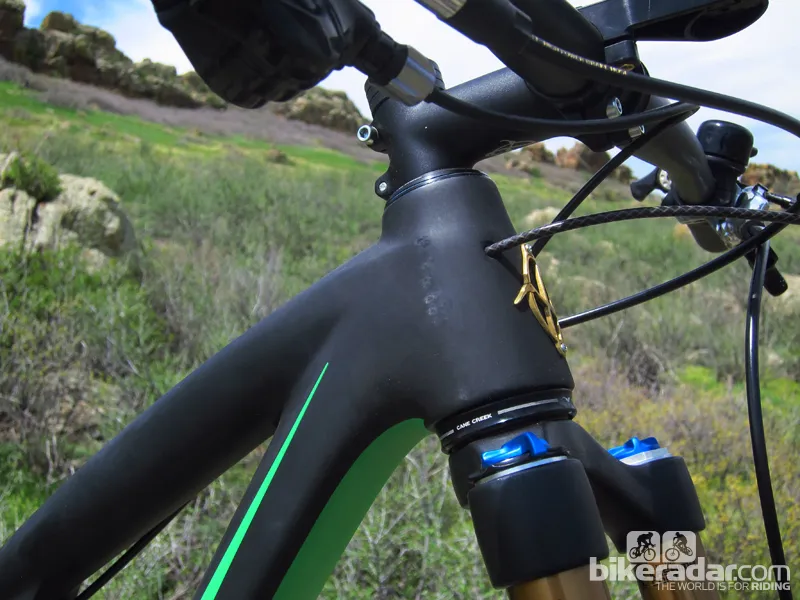
The tapered head tube is very short to help maintain a reasonable handlebar height
That said, its unique geometry yields a couple of key quirks, too. For one, that short wheelbase comes with a correspondingly short cockpit, with 30mm less reach than the Stumpjumper's fairly standard layout. We ended up resorting to a 90mm (and, occasionally, 100mm) stem but potential buyers should seriously consider going up a size.
Secondly, the very low bottom bracket effectively increases the stack, so if you tend to have problems getting your bar at a proper height on a 29er, it will only be a bigger issue here.
"Part of the reason the Ripley handles so well is that is has a short wheelbase for a 29er with that much travel," said Nicol. "You can't do that with a super-long top tube so you have to use a slightly longer stem than is currently fashionable.
"A lot of people think they like a short stem for handling but we don't necessarily agree. We think they like them for the feeling of confidence that they're not going to go over the bars when on the steeps.
"And we also think that's old news for a couple of reasons. One, a 120mm travel 29er fork and wheel is really long, so the fulcrum for going over the bars is much further forward than it was before. So you don't need a short stem to feel like you're behind it. Second, dropper posts have lowered your center of gravity while descending, further increasing your confidence that you're not going to go over the bars."
Frame: Feathery light and clean but cable routing needs work
The visual giveaway of any dw-link bike is a pair of short links that connect the solid front and rear triangles, yet when you look at the Ripley there are none to be seen. Instead, both ends are connected with eccentric pivots that are wholly housed inside the giant seat tube. It's not only a clean look but the full complement bearings are fairly well protected from grime, too. Moreover, they're common sizes and the pivots are easily disassembled for quick servicing when necessary.
That compact arrangement might also contribute to the Ripley's very good chassis weight. Complete with rear shock, rear derailleur hanger, and seatpost collar, actual weight of our medium sized test bike is just 2,480g.
Not surprisingly given the rest of the Ibis lineup, the Ripley uses carbon fiber construction for both the front and rear triangles. Standard modern features apply here as well, including a tapered head tube, PF86 bottom bracket, 142x12mm thru-axle dropouts with post-mount rear brake caliper tabs, and a high direct-mount front derailleur anchor that's built into the rear swingarm. There's no provision for a stealth-style internally routed dropper post, though.
The Ripley does technically include internal routing, but only barely – and it's poorly done. Just two paths run inside the top tube from the head tube to just above the rear shock, and it's frustrating to run fresh lines with no internal guides and small holes at either end.
Routing in general leaves much to be desired, with the top-routed cables bowing out above the rear shock when the suspension is compressed. If you're not careful, the front derailleur housing can rub badly on the carbon rear shock yoke as well, which will lead to some ugly scuffs, at best, or some deep gouges.
Speaking of rub, we unfortunately encountered a critical issue during our customary teardown that marred (literally) what is otherwise a brilliant chassis. Housings enter the frame at the front of the head tube and then run around the steerer on their way through the top tube. In our case, though, the housing was actually rubbing on the steerer tube itself – and we confirmed with other Ripley owners that this was the case with their bikes, too.
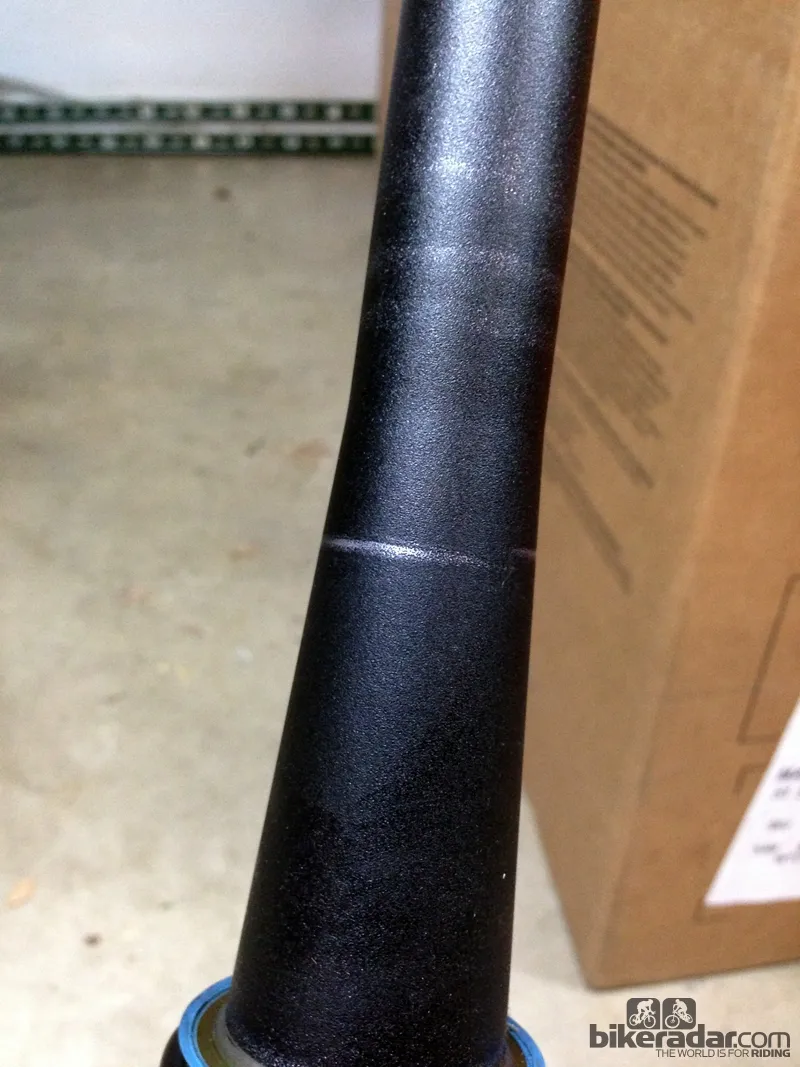
The internally routed housing rubs on the sides of the Ripley 29's steerer
One wouldn't expect that to be a problem, but as any owner of an aluminum frame persistently rubbing on housing can attest, it will only be a matter of time before structurally dangerous grooves are worn into the steerer.
Ibis says future stock will be fitted with a stainless steel sleeve to go over the steerer to prevent damage, and current owners will receive one free of charge. It's a disappointingly hokey interim fix but one that should be effective nonetheless. Ultimately, we hope Ibis will simply revert back to external routing and also reposition the lines to run along the top of the down tube, a la Santa Cruz.
Equipment: Outstanding mix of SRAM and Shimano
Ibis offers the Ripley with a number of different build kits and optional upgrades, so you can feel free to create the bike of your dreams – or budget, as the case may be. The frame costs US$2,899/£2,649 (the UK price displayed here is for the frame only).
Our top-end tester came equipped with the cream of the crop and there was little to complain about. Ibis don't have a direct comparison for the build in terms of UK pricing, but standard XT models cost US$5,599/£5,224 and XTR versions US$6,999/£6,399.
Highlighting our build is SRAM's excellent XX1 1x11 group. The overall range is usefully broad, and with a 32-tooth chainring fitted we never felt a need for lower gears, even on long climbs in the Colorado Front Range. Shifting was crisp and precise, too, and we never suffered a dropped chain thanks to the cleverly alternating tooth profiles.
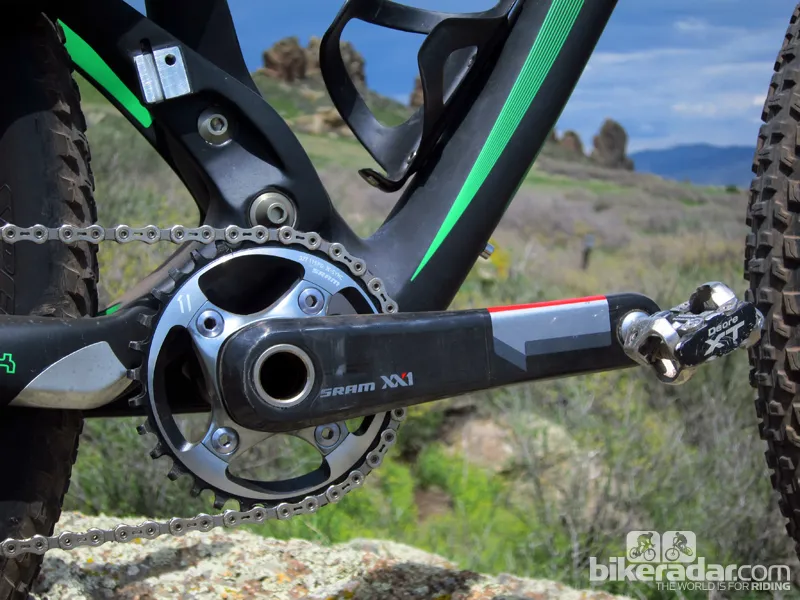
Our test Ibis Ripley 29 arrived with SRAM's fantastic XX1 1x11 drivetrain
Ibis made a wise substitution in the brake department, with Shimano's XTR stoppers offering a better lever feel and far better reliability than the XX or X0 Trail options from Avid. Paired with a 180mm rotor up front and a 160mm one out back, there was more than enough power for typical trail riding situations, excellent modulation and ergonomics, and silent operation.
The optional EC90 XC wheels' carbon fiber rims helped keep our sample down to just 10.86kg (23.94lb) without pedals. They were also impressively rigid and, thanks to Easton's recent rear hub bearing upgrades, we expect reliability to improve too. That said, riders who tend to run lower pressures and hit frequent rocky terrain might want to consider more forgiving aluminum hoops.
We had no complaints about the KS LEV dropper post. Action was smooth and predictable, there's minimal play, and the fixed cable anchor is a far cleaner solution than the dynamic one used by most of the other players. The tidy remote occupies little space on the bar, too, and is easy to access.
Ibis includes an outstanding Fox 32 Float CTD fork with all build kits, and if you want something a little beefier there's an option for a 34 that adds about US$240 and 200g. We tried both in an effort to offset the front triangle flex and, surprisingly, preferred the 32 for its more balanced feel front to back – go figure.
